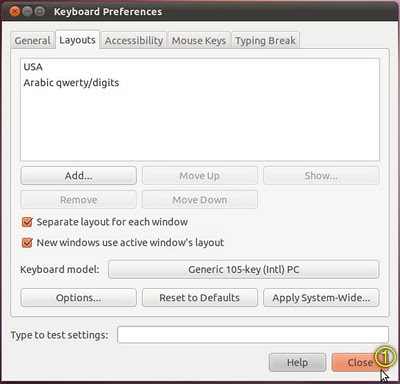24 Muharam 1432H
After clicking the Install Font button, see Pic 1, and trying out a new font, it turns out that that new font isn't what i want on my list of fonts. But how does one remove it?
Pic 1 - The Install Font button. Easy to install, hardly know how to uninstall :p
Before removing the unwanted font, Pic 2:
Pic 2 - The unwanted font shown in OpenOffice.org Writer. Before removing.
After removing the unwanted font, Pic 3:
Pic 3 - The unwanted font shown in OpenOffice.org Writer. After removing.
Like any seasoned Windows user, i did go through the fonts file, see Pic 4, but couldn't find the font i want to delete. By the way, the file is located here:
File System > usr > share > fonts.
Pic 4 - Locating the fonts folder in Ubuntu.
So, i did some searching and found these to be helpful:
- How to remove installed fonts in Ubuntu
- How to Delete Ubuntu Fonts
Turns out that a font installed using the Install Font button is referred to as custom fonts or user fonts.
Here, i refined the explanations.
1. Run the Terminal. The Terminal, shown in Pic 6, is located here:
Panel > Applications > Accessories > Terminal. See Pic 5.
Pic 5 - Refer Step 1. Running the Terminal from the menu.
Pic 6 - The Terminal, freshly loaded.
2. Type in the command as follow:
Refer Pic 7.cd /home/username/.fontsSource: How to remove installed fonts in Ubuntu
Pic 7 - Refer Step 2. Changing directory to the fonts folder.
3. Change the part username in Step 2 to your username. Mine is aisha. See Pic 8.
In my case, it's:
cd /home/aisha/.fontsThen press the Enter button. A new command line appears as shown in Pic 9.
Pic 8 - Refer Step 3. Changing the username in the command.
Pic 9 - Refer Step 3. We are now in the fonts folder.
4. To see the list of items in the fonts folder, type the command as follow:
Refer Pic 10. Then press the Enter button. A list of custom fonts appears, similar to Pic 11.lsSource: How to remove installed fonts in Ubuntu
Pic 10 - Refer Step 4. Adding command to see the list of items in the fonts folder.
Pic 11 - Refer Step 4. List of user fonts installed in my laptop.
5. From the list, similar to as seen in Pic 11, look for the font(s) you want to remove. Then type in the the command as follow:
followed by the name of the font(s) you want to remove. The are two ways to add the font name:rmSource: How to remove installed fonts in Ubuntu
- You can either type-in the name, or
- Highlight the name. Press Ctrl+Shift+C to copy. Then press Ctrl+Shift+V to paste.
In my case, i want to remove the Arabic Typesetting font. So, my command, as shown in Pic 12, will be like this:
rm arabtype.ttf
Pic 12 - Refer Step 5. Adding the command to remove the unwanted font(s).
6. Upon pressing the Enter button in Step 5, a new line to confirm the removal appears. Refer Pic 13.
To proceed with the removal, type in:
ythen press the Enter button, see Pic 14. Then command line seen in Pic 9 appears, also shown in Pic 15. The removal process is completed.
Pic 13 - Refer Step 6. Confirmation required.
Pic 14 - Refer Step 6. Removal confirmed.
Pic 15 - Refer Step 6. Unwanted font has been removed.
























